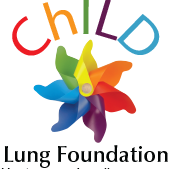When we breathe, air enters our lungs and fills tiny airsacs called alveoli. Each air sac is surrounded by an extensive capillary bed, which is a network of tiny, thin blood vessels. In order for us to bring in oxygen and release carbon dioxide, the alveoli and capillaries must be properly aligned. If there are not enough capillaries or the capillaries are too far away from the surface of the alveoli, gas exchange cannot occur effectively.
Alveolar Capillary Dysplasia with misalignment of the pulmonary veins (ACD/MPV) is a rare disorder where the capillaries around the air sacs fail to develop normally. There are fewer capillaries, and the ones that are present are not positioned correctly within the walls of the alveoli. This makes gas exchange very difficult and ineffective.
Normally, the blood is brought to the capillaries by arteries, and the veins carry blood away from the alveoli to the heart in bundles with lymph vessels. In ACD/MPV patients, these veins are found abnormally bundled with the arteries and the smooth muscle tissue in the arteries is often thickened, which restricts normal blood flow. When this occurs, it increases the blood pressure in the pulmonary arteries and makes the heart work harder. This causes pulmonary hypertension and is one of the main symptoms of this disease.
Babies born with this disorder typically develop respiratory distress within a few minutes to a few hours after birth. They experience shortness of breath, their lips, skin, and fingernails often appear bluish (cyanosis), and they have persistent pulmonary hypertension that does not respond to treatment.
Other abnormalities of the cardiovascular, digestive and urogenital systems are found in a large percentage of these patients and there are cases in families that have lost more than one child to this disorder, which suggests a genetic cause. Two genetic causes have been identified (FoxF1 and 16q24.1 microdeletions), but they do not explain all of the cases of ACD.
There is no known treatment for these children and it is considered a fatal diagnosis.
More information
